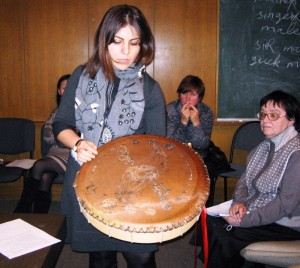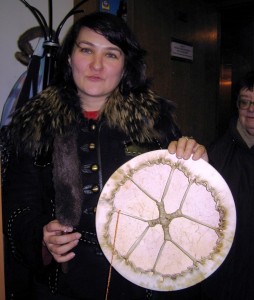© 2012 V. Yu. Voronina
2012 – № 2 (4)
Key words: core shamanism, neoshamanism, psychotherapy, self-healing, holistic approach, animal forces, loss of soul
Abstract: The article focuses on the core cross-cultural principles of shamanism. The author investigates the term “core shamanism”, analyzes the reasons behind its advent and growth of popularity, explores the link between shamanism and psychology/psychotherapy, names the main representatives of core shamanism, examines the principles of healing in shamanism tradition, its methods of diagnostics and causes of diseases. The author also touches upon the questions of ethics and safety arrangements, used by shamans, and describes their main instruments.
Core shamanism is a term, proposed by Michael Harner, an American anthropologist. As a result of the study of shamanistic traditions of different cultures, Harner came to conclusions similar to the findings of Mircea Eliade – those of uniformity of a «central core» in shamanic practice around the world. He also proposed the term «core shamanism» that means basic shamanic techniques cleared from the cultural and social context. In 1979, Michael Harner organized in the USA a Foundation for Shamanic Studies which is engaged in teaching adapted shamanic practice.
Among the most significant practitioners of core shamanism who pay a considerable attention to the topic of healing one should note: Michael Harner, Sandra Ingerman, Jonathan Horwitz, Betsy Bergstrom, Annette Høst, Shenoa Taylor.
Healing is a traditional function of a shaman. However, the important point is that the shamanic practice not so much heals but rather helps to ask for help to heal the person on his/her own. Healing can mean a physical or mental relief, or other understanding (another view of the situation), or another attitude to what is happening, or increase the amount of energy in a situation.
Specific actions of shamanic practice are the starting point for running the process and building a context for healing. In this case, the shaman works primarily with the spiritual reason of a disease.
It should be noted that shamans act in the paradigm of healing, which does not exclude other modalities of treatment, and rather considers them as complementary means. Inclusion of all successful systems of healing in a single holistic approach is a basis of shamanism.
As shamanism is a very strong practice, it is important to be careful in order not to harm others. The ethical aspect and safety are very important.
Shamans believe the disease always has a spiritual reason. And the work in the first place should be done with it.
There are several possible reasons for a disease:
1) the person does not have enough energy, of a certain quality, any strength that is necessary (soul loss, loss of animal energy).
2) in the body or mind of the person there is extra energy that is not needed for the person here and now (intrusion, a suffering being, a spell or a curse).
3) the disease can also point to the person’s deviation from his/her path, call, destiny, the so-called mission of life.
In the energy of the disease there are always two aspects – the one that interferes with normal, healthy functioning of a human being (a painful factor), and the one that leads a person to healing.
Among the important support tools one should note a drum, a rattle, the energy of songs, a staff, quartz crystals.
Photos







